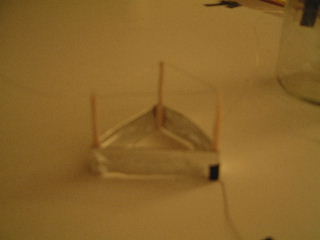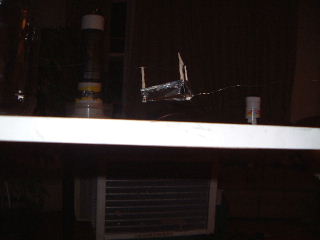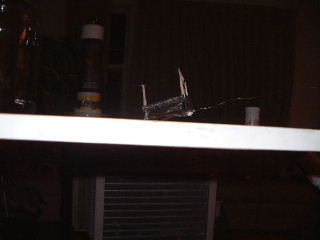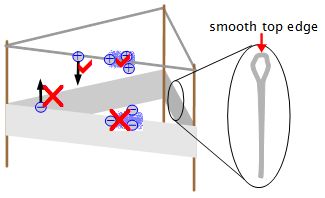Lifter/ionocraft 1a - Quickly thrown together single triangle, 75mm edge length lifter
This device was thrown together by me on October 10, 2001, a few days after I saw the pictures on Transdimensional's website, the folks who invented the lifter (their website no longer exists). It was simple to do given all the other ion propulsion experiments I'd already done in trying to replicate T.Townsend Brown's work. It was a small crude one that flew once and then degraded to the point where it would not fly again, probably caused by all the holes blasted in the top of the foil skirt by arcing. It is a single triangle lifter where each edge of the triangle is 75mm long.





The device moved very wildly the first time I tried it out. The wires were positive with respect to ground and the foil was ground. I then teathered the three corners using nylon thread and managed to arrange things so that the above sequence of pictures could be taken. As you can see, even then it was not very stable. For the first few runs the device was fairly quiet with only a little hissing and high frequency sound. After a while of toying with it however, it steadily degraded to the point where there is plenty of hissing and corona.
Unfortunately the device had degraded significantly before I decided to try reversing the polarity to see if the Biefeld-Brown effect could be a contributor. By this point, even with positive on the wire, it barely lifted although it did not lift at all with negative on the wire (again, had I tried this before the device had degraded it may have lifted.)

Note that due to all the experience I had already with working with ion propulsion I folded the top edge of the lifter foil over its horizontal balsa wood support so that the top of the foil had a rounded edge. This helps with production of ion wind since it works on the principle of a sharp electrode and a smooth electrode resulting in a wind in the direction of sharp electrode to smooth electrode and the net movement being in the opposite direction. The sharp electrode in this case is the thin, bare copper wire. I have a page all about how how ion propulsion works.
